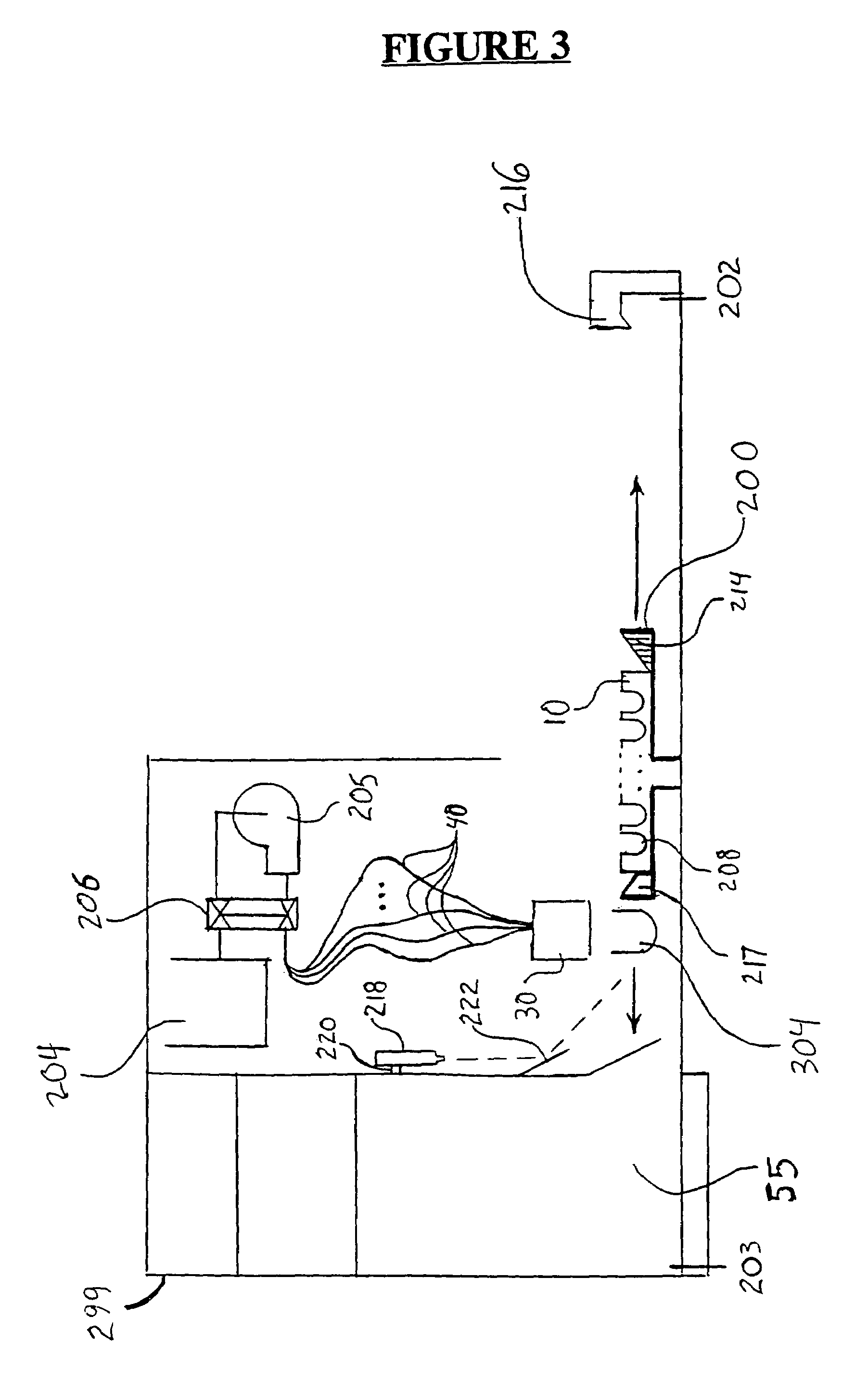Method for measuring luminescence at a luminescence detection workstation
a luminescence detection and workstation technology, applied in the direction of fluorescence/phosphorescence, dosimeters, instruments, etc., can solve the problems of stray light from external light sources or adjacent samples, need for high-speed processing, and chemiluminescence or bioluminescence may diminish, so as to minimize crosstalk and minimize crosstalk
- Summary
- Abstract
- Description
- Claims
- Application Information
AI Technical Summary
Benefits of technology
Problems solved by technology
Method used
Image
Examples
example 1
Purified cAMP Quantitation
[0092]cAMP standards were serial diluted and added to a 96-well assay plate with alkaline phosphatase conjugated cAMP and anti-cAMP. Plates were processed with the cAMP-Screen™ protocol and imaged for 1 minute on the NorthStar™ 30 minutes after addition of CSPD® / Sapphire-II™. A sensitivity of 0.06 pM of purified cAMP is achieved with cAMP-Screen™ on the NorthStar™ workstation. The results are depicted in FIG. 8.
example 2
cAMP Induction in Adrenergic β2 Receptor-expressing C2 Cells
[0093]Adrenergic β2 Receptor-expressing C2 cells were plated in a 96-well plate (10,000 cells / well) and stimulated with isoproterenol for 10 minutes. cAMP production was quantitated in cell lysates using the cAMP-Screen™ assay. The assay plate was imaged for 1 minute on the NorthStar™, 30 minutes after addition of CSPD® / Sapphire-II™. Increasing cAMP levels were detected on the NorthStar™ from the stimulated adrenergic receptor. The results are depicted in FIG. 9.
example 3
Luc-Screen™ Reporter Gene Assay in 96-, 384- and 1,536-Well Format
[0094]pCRE-Luc-Transfected cells were seeded in 96-, 384- and 1,536-well plates, incubated for 20 hours with forskolin, and assayed with the Luc-Screen™ system. PCRE-Luc contains the luciferase reporter gene under the control of a cAMP response element (CRE). Forskolin induces intracellular cAMP production through the irreversible activation of adenylate cyclase. All plate formats demonstrate comparable forskolin-induced cAMP levels. The results are depicted in FIG. 10.
PUM
| Property | Measurement | Unit |
|---|---|---|
| quantum efficiency | aaaaa | aaaaa |
| temperature | aaaaa | aaaaa |
| time | aaaaa | aaaaa |
Abstract
Description
Claims
Application Information
 Login to View More
Login to View More - R&D
- Intellectual Property
- Life Sciences
- Materials
- Tech Scout
- Unparalleled Data Quality
- Higher Quality Content
- 60% Fewer Hallucinations
Browse by: Latest US Patents, China's latest patents, Technical Efficacy Thesaurus, Application Domain, Technology Topic, Popular Technical Reports.
© 2025 PatSnap. All rights reserved.Legal|Privacy policy|Modern Slavery Act Transparency Statement|Sitemap|About US| Contact US: help@patsnap.com



